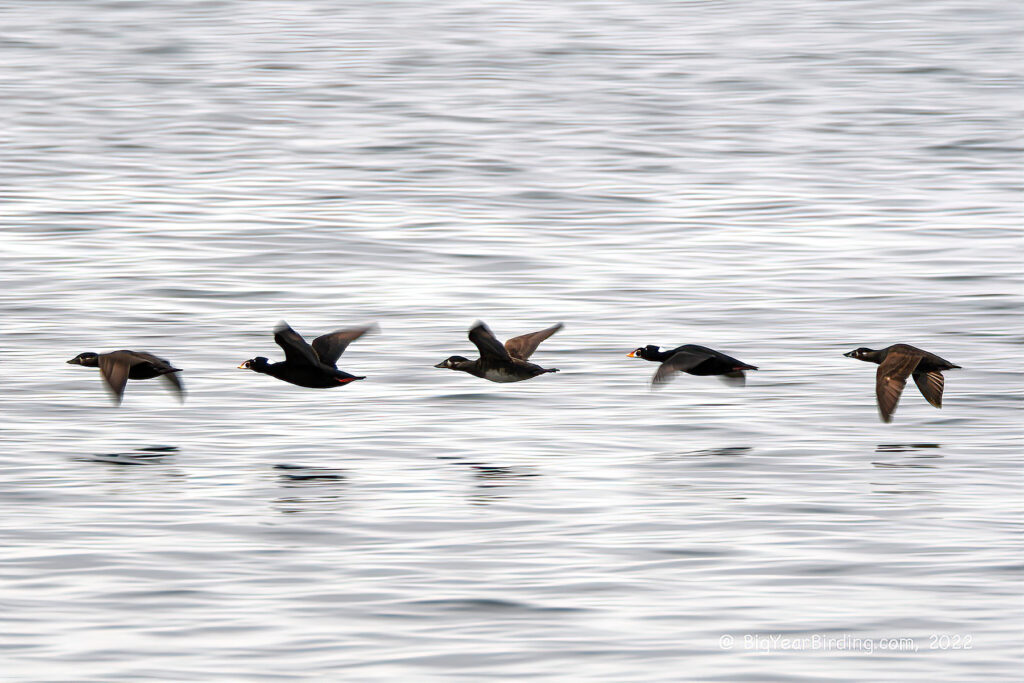The Surf Scoter, also known as the Sea Coot, is a large sea duck that is widely distributed across the coasts of North America. It is a chunky bird, measuring between 18 to 23 inches in length and weighing between 1.8 to 2.8 pounds. Males are slightly larger and heavier than females. Its most distinguishing field marks include a black body with a white patch on the forehead and nape, a thick, black bill with a knob on the base, and a bright orange-yellow bill tip.

Surf Scoters breed in the northern parts of North America, including Alaska and the Canadian Arctic, and then migrate to the coasts of the Pacific and Atlantic oceans for winter. During the winter, they can be seen in large flocks, either on the water or in flight. They are strong fliers and can travel long distances, with some individuals traveling as far south as Mexico.
While the Surf Scoter is primarily a sea duck, it can also be found on large freshwater lakes and rivers during migration. They are opportunistic feeders, feeding on a variety of prey, including mollusks, crustaceans, and small fish. They are known for their diving abilities and can dive to depths of up to 40 meters to forage for food.
Although the Surf Scoter is a common sight in many coastal areas, its population has been declining in recent years. Threats to their populations include oil spills, overfishing of their prey, and habitat loss due to coastal development. Conservation efforts, such as the protection of breeding and wintering habitats and reducing human disturbance, are essential to help maintain their populations.

In addition to being a fascinating species to observe in the wild, the Surf Scoter also plays an important role in the ecosystem. As a predator of mollusks, they help to control the population of these organisms, which in turn can have a positive effect on the health of coastal ecosystems.


